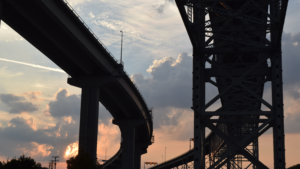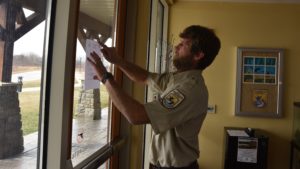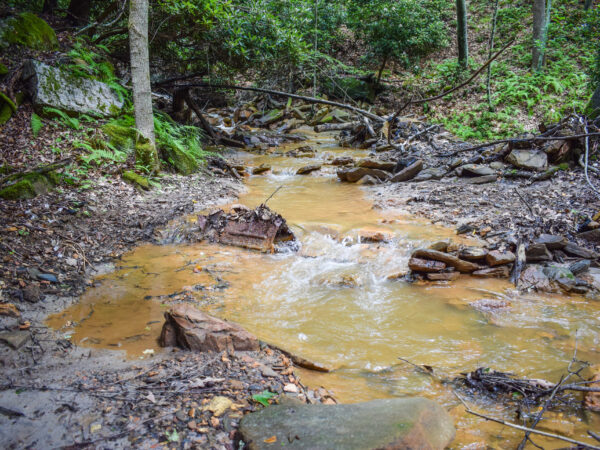
In a normal year as spring approaches, research facilities around the Great Lakes region come to life planning field work, preparing to open biological stations, deploying buoys and generally ramping up for the peak research season.
But this isn’t a normal year, with the specter of COVID-19, the coronavirus, looming over everything.
“There are many unknowns right now,” Central Michigan University Professor Don Uzarski told Great Lakes Now in an email.
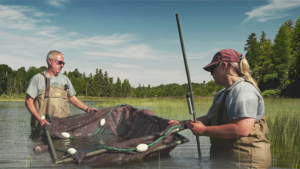
Professor Don Uzarski, Photo courtesy of cmich.edu
Uzarski, who directs the university’s Institute for Great Lakes Research, said he had to cancel a trip to Beaver Island in Lake Michigan to get ready to open the biological station because of a ban on travel.
The bigger issue is will a travel ban apply to field research trips that are in the not-too-distant future, he said.
Even though “things have literally come to a halt,” Uzarski says it’s the best time of the year for a forced hiatus.
Training can be accomplished before work accelerates as June approaches, when scientists from around the region gather in places like Saginaw Bay, Duluth and New York to establish wetland monitoring protocols.
Central Michigan University scientists oversee an ongoing, region-wide wetland monitoring program sponsored by the U.S. EPA’s Great Lakes Restoration Initiative. Since 2010, wetland monitoring has been one of the EPA’s high-priority Great Lakes projects.
Prior to the June meetings, work begins in April with data collection on birds and amphibians that “tells us about the health of the ecosystem,” according to Uzarski.
Work on inland wetlands begins in late April, with coastal work in full swing by June.
For now, the university’s bioscience building “is almost empty, other than just a few stragglers and my lab managers,” Uzarski said, noting that they had the option of working from home.
From Ohio to Ontario
At the University of Windsor in Ontario, Professor Mike McKay is concerned about monitoring for harmful algal blooms.
Any reduction of monitoring and sampling that result from restrictions caused by COVID-19 will have a negative impact on research, according to McKay.
“Although, it may be buffered somewhat by our growing use of satellite remote sensing and use of autonomous sensors to monitor water quality,” said McKay, who directs the Great Lakes Institute for Environmental Research.
McKay said receiving satellite data is dependent on continued NOAA operations and, even if that happens, scientists will still need to do in-water sampling.
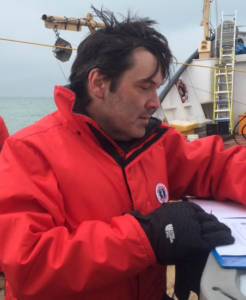
University of Windsor Professor Mike McKay, Photo University of Windsor
Plans for summer are on hold now, McKay said.
Right now, the University of Windsor is offering flexibility for researchers to continue lab and field work, but McKay cautioned that could change.
Ohio State University’s Lake Erie Stone Lab conducts critical research on the lake’s harmful algal bloom issues and releases a widely anticipated status report every summer.
The university did not respond to specific questions about a COVID-19 impact on 2020 Lake Erie research.
Spokesperson Benjamin Johnson said “currently, all on-campus research is restricted to essential activities only.”
The priority is on the health and well-being of the Ohio State community, Johnson said, and more information would be shared as available.
At the University of Wisconsin-Milwaukee, Val Klump, dean of the School of Freshwater Sciences, said “research will continue.”
Klump said the school only has graduate students, meaning a small population, and they will continue to come to work.
They’ll prepare for field work that begins in May, peaks in July and goes through September, with a focus on changes in the ecosystem, fish habitat and the dead zone in Green Bay, according to Klump.
Two countries, multiple institutions, thousands of projects
The scope of Great Lakes research spans multiple institutions in the U.S. and Canada, according to Paul Sibley, board president of the International Association for Great Lakes Research in Ann Arbor.
“It is probably safe to say that there are thousands of research and monitoring projects in the Great Lakes basin involving U.S. and Canadian state and municipal governments, universities and colleges, NGOs and community groups,” Sibley said in an email response.
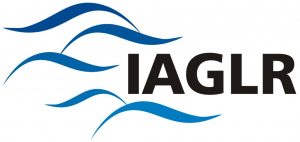
International Association for Great Lakes Research
IAGLR’s annual conference is scheduled in Winnipeg in early June and, in a statement on its website, Sibley cautioned members about making travel arrangements given the unknowns associated with COVID-19.
“While we encourage your preparations for IAGLR20, we do advise that you temporarily defer travel arrangements while we learn more about responses to the outbreak from government, business and academia that will aid us in our decision-making,” Sibley said.
Approximately 750 scientists attend the conference, according to Sibley.
The EPA’s Great Lakes office in Chicago did not respond by deadline to a request to comment on any impact of COVID-19 on its work. Spokesperson Anne Rowan did say the office remains open.
Michigan’s Department of Environment Great Lakes & Energy did not respond to a request to comment.
Featured Image: Coronavirus Disease 2019, Image by Rosario “Charo” Gutierrez U.S. Air Force via macdill.af.mil
More COVID-19 coverage from Great Lakes Now:

